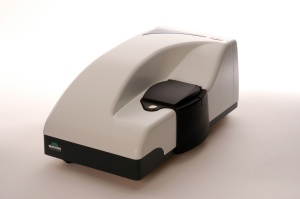Aug 29 2008
The National Institute of Standards and Technology (NIST) has used the Zetasizer Nano particle characterization system from Malvern Instruments as part of the qualification and assessment process for its new gold nanoparticle reference materials. The three new reference materials, launched in January of this year, were developed in cooperation with the National Cancer Institute's Nanotechnology Characterization Laboratory (NCL). They will facilitate data consistency across pre-clinical biomedical research and accelerated development of methodologies and applications that rely on nanoscale measurements.

Reference Materials (RM) are designed specifically to enable interlaboratory test comparisons. The previous lack of nanoparticle standards, used to verify the accuracy of measurements and ensure that data are robust, has made the advancement of new measurement methods that rely on nanoscale parameters difficult.
Nanotechnology holds the promise of increased speed and efficiency across many analytical systems. The nominal 10, 30 and 60 nanometre gold spheres are the first nanoscale standard references. They represent the advent of much needed standardization at this scale and, by enabling evaluation and qualification of methodologies and instrument performance, should expedite swifter development and approval of novel techniques and applications.
The new RMs were evaluated using six independent methods - atomic force microscopy (AFM), transmission electron microscopy (TEM), scanning electron microscopy (SEM), differential mobility analysis (DMA), dynamic light scattering (DLS – Zetasizer Nano), and small-angle X-ray scattering (SAXS). While NIST neither recommends nor endorses instrumentation, Malvern is pleased to note that the Zetasizer Nano and 3000HS were used in the assessment processes.